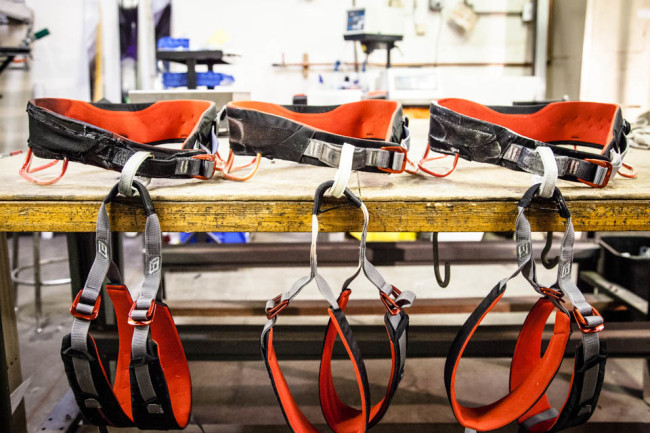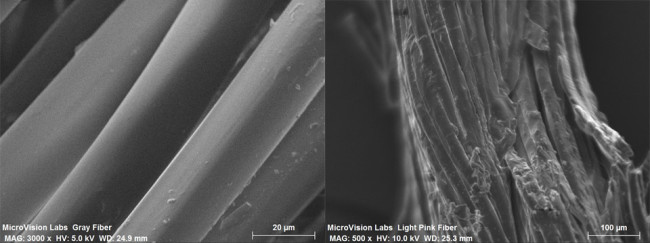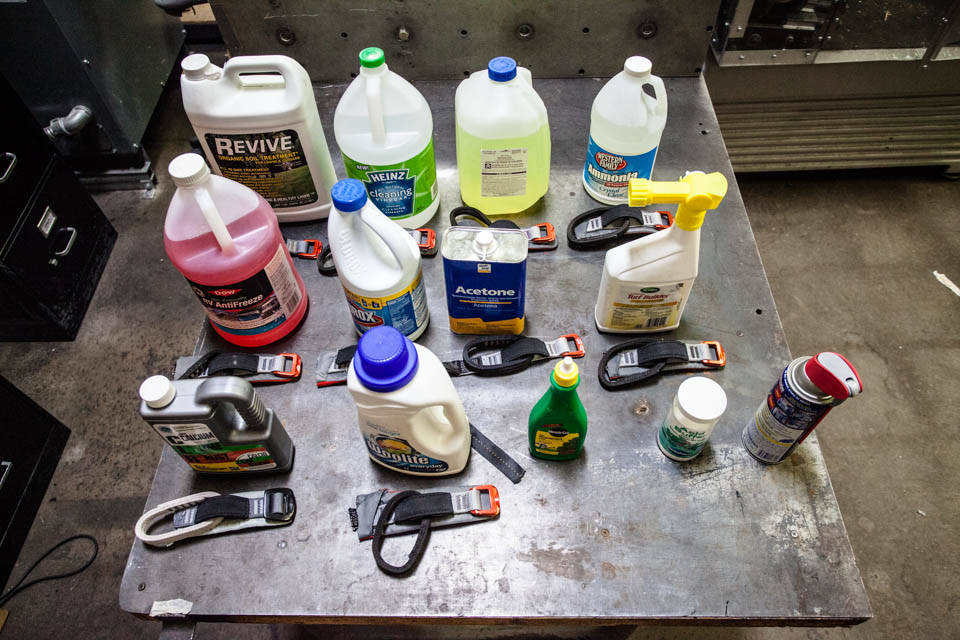
Black Diamond’s QC Lab recently posted a fascinating CSI-like investigation of a mysterious harness failure that highlights the risk of chemical contamination to climbing materials. In the article Kolin Powick, Black Diamond’s Director of Quality, describes how a harness that appeared normal had become critically damaged by chemical exposure.
The owner of the climbing harness described the equipment’s failure this way:
Yesterday I went top-roping at my local gym and as I was being lowered, I heard a pop. I looked down to see that my harness has ripped off in the waist. I felt myself falling backwards so immediately grabbed the rope and was lowered safely to the ground. I have kept the harness in pristine condition in my gym bag and it has never been abused or used outdoors.
QC Labs asked the customer to send in the harness for evaluation. They determined that the harness had been chemically contaminated, and that the chemical had completely dissolved the nylon threads attaching the waistbelt webbing to the harness. Most frighteningly, while the nylon threads used to sew the harness together had been destroyed, the polyester webbing showed no signs of damage; only a very careful inspection of the equipment would have revealed its danger.
Although neither the QC Labs or the customer could determine exactly how or to what chemical the harness had been exposed, QC Labs was able to narrow it down to some type of acid.
Using off-the-shelf cleaning chemicals they performed some controlled experiments to see if they could recreate the failure and measure the effect of each chemical on a climbing harness.

In their testing they found a number of off-the-shelf chemicals that would destroy the harness’s nylon stitching. By exposing test harnesses to these chemicals for an extended period they were able to “recreate the level of degradation of the nylon threads and easily pull the tacks apart by hand, just as we saw with the customer’s harness.”
After a 72-hour exposure these chemicals produced catastrophic failure to the nylon threads:
- muriatic acid: 97% reduction in strength
- sulphuric acid (aquarium cleaner): 92% reduction
- clorox bleach: 73% reduction
Even a short 30-minute exposure with mild cleaning agents such as vinegar and Woolite produced significant reductions in the nylon’s strength (13% and 9% respectively).
Powick gives this warning at the conclusion of his story:
Several years ago there was a rope incident and after analysis it ended up looking like the rope was somehow contaminated with acid. How the rope actually came in contact was never determined. So this is the second incident I’ve personally looked into regarding chemical contamination of climbing gear – and luckily in both cases no one was hurt. Also in both cases, the end result was that the customer doesn’t really know how this chemical contamination occurred. Scary.
Black Diamond, in the product manual for their harness, advises that “Climbing gear must not come into contact with corrosive materials such as battery acid, battery fumes, solvents, chlorine bleach, antifreeze, isopropyl alcohol or gasoline.” While not common these days, muriatic acid is sometimes used to clean climbing holds. And certainly bleach and bleach-containing chemicals are used in many gyms for cleaning. It’s easy to imagine how the climbing equipment in a gym could be exposed to bleach that is used to clean floors or countertops, or to strong solvents used to clean climbing holds.
This incident highlights the importance of properly storing these chemicals away from all climbing equipment, particularly all nylon product such as ropes, draws and harnesses, and to be cautious when using cleaning chemicals in areas where climbing equipment could come into contact with them. By exposing climbing equipment to these chemicals, either through a large spill or by repeated contact with small amounts, the equipment’s safety could become critically compromised without a visual warning that it has been damaged.
Read full QC Lab article here: The Electric Harness Acid Test

Climbing Business Journal is an independent news outlet dedicated to covering the indoor climbing industry. Here you will find the latest coverage of climbing industry news, gym developments, industry best practices, risk management, climbing competitions, youth coaching and routesetting. Have an article idea? CBJ loves to hear from readers like you!







